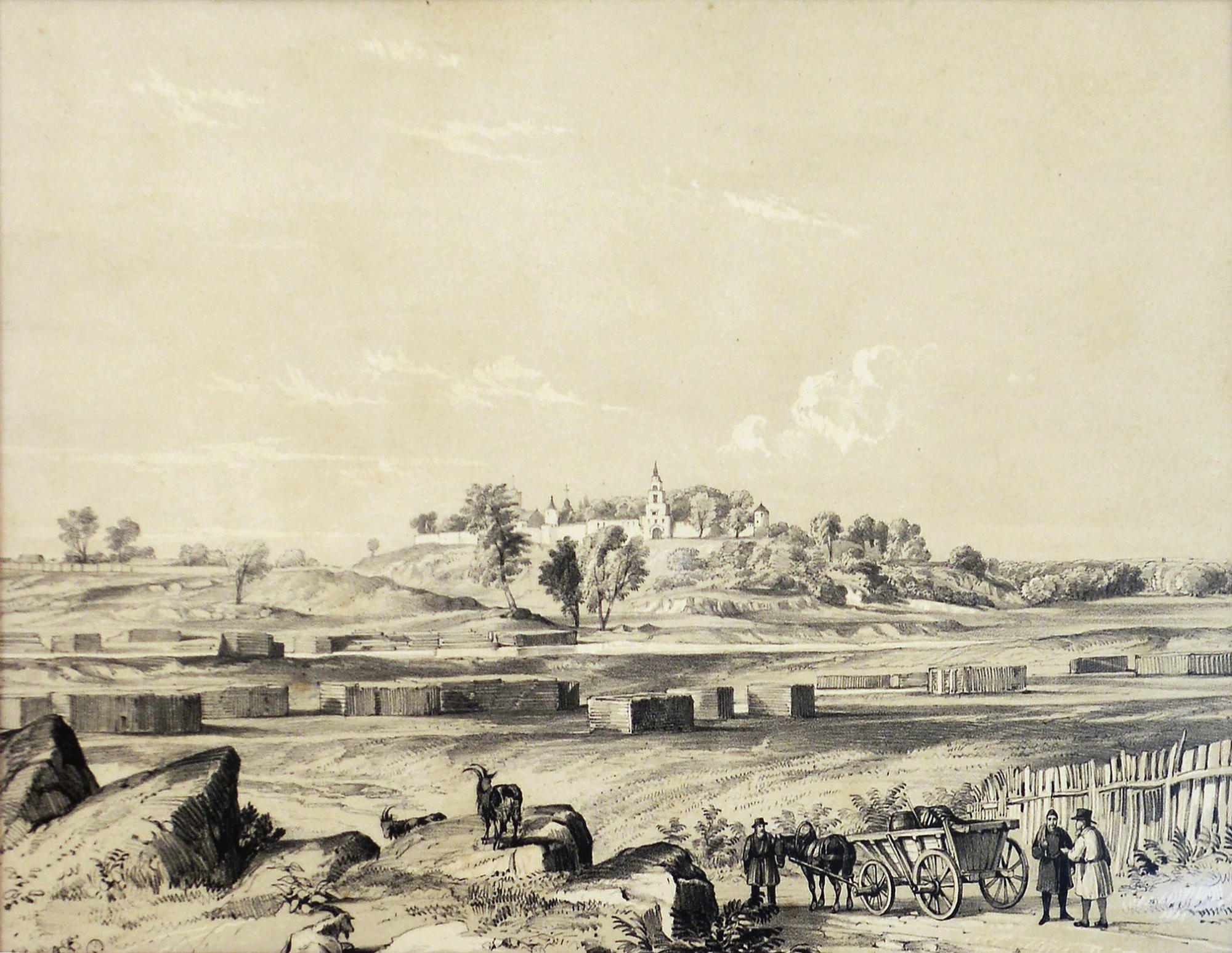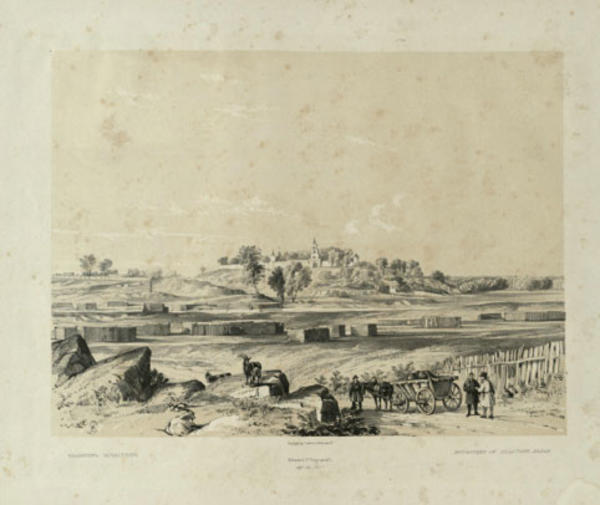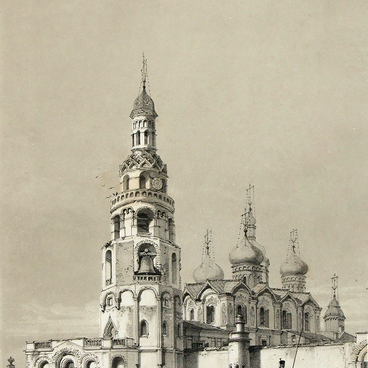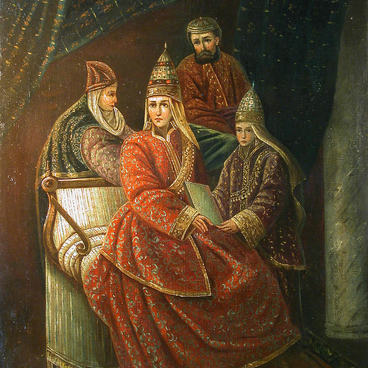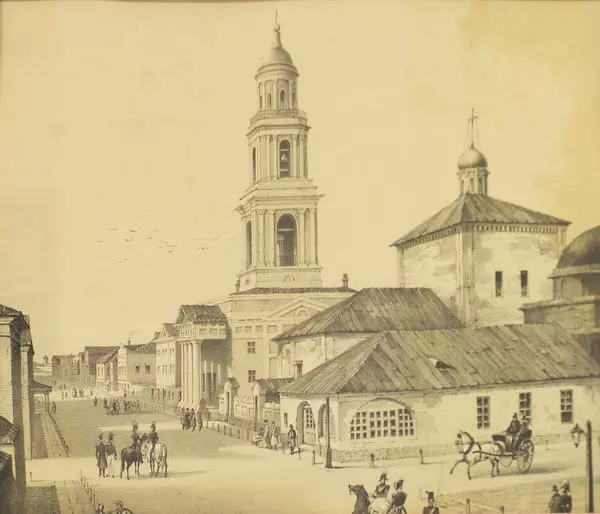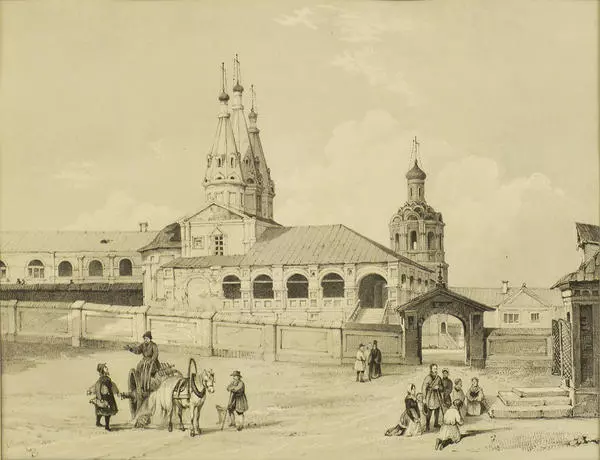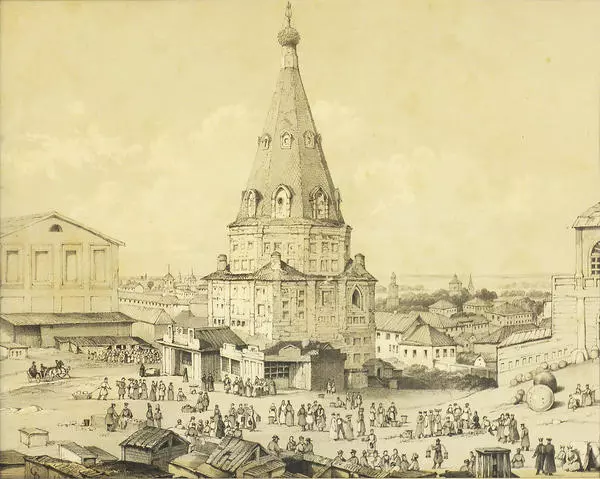The background of the lithograph shows the Zilant Monastery. It got its name after the hill where it is located. According to the legend, in ancient times there lived Zilant the Dragon there. The town arms of Kazan feature the same winged serpent.
Zilant Monastery
Время создания
1839
Размер
32x46,8 cm
Техника
Tinctured Lithography
Выставка
0
Открыть в приложении#1
Edward Tracy Turnerelli
Zilant Monastery
#2
#4
The Zilant Monastery was founded under a decree by Ivan the Terrible in 1552 after the conquest of Kazan. The Czar ordered to build the Monastery of the Holy Dormition at the site of the field church and the mass grave of Russian warriors killed in the battle. However, the cathedral and monastic cells often got flooded during overflows of the Kazanka river, and therefore, in 1560, the Monastery was moved to higher grounds: to the Zilant Hill.
#3
The architectural complex of the Zilant Monastery had been fully completed by the 18th century. It included the Church of Dormition, the Cathedral of St. Alexis, the Church of All the Saints, rear buildings and a garden. The whole complex was surrounded by stone walls. In a warm season, local residents liked to walk, rest and celebrate various holidays on the green hill. During spring floods people would often go boating along the Kazanka river, singing songs to a harmonica.
From 1829 through 1850, the Zilant Monastery was headed by Archimandrite Gavriil (born Vasiliy Voskresenskiy), the author of the first Russian multivolume study on the history of philosophy. Thanks to is efforts, the Monastery received continuous financial support, and buildings of three old monastery churches were restored. The Archimandrite was loved and respected by his parishioners; he was reckoned as a talented ecclesiastic orator.
#5
During the Soviet years, the Zilant Monastery was almost completely destroyed. The only two buildings that have survived to this day are the 19th century Church of All the Saints and the Abbot house. In 2006 the complex of the Zilant Monastery was complemented with the Holy Trinity Cathedral, an exact replica of the well-known cathedral of the Holy Trinity and St. Sergius Laura.
#6
Thanks to the Views of Kazan, painted from nature by Edward Turnerelli, one can see what the Holy Dormition Zilant Monastery looked like during its best years. The artist Edward Turnerelli lived in Kazan from 1837 through 1844 and taught the English language in the University of Kazan. Over a few years, he created a lot of drawings elaborately picturing the main landmarks of the city and its environments; later the drawings were published in the form of a lithographic album.
#7
The National Museum of the Republic of Tatarstan
читать дальшескрыть
00:00
00:00
1x
Zilant Monastery
Время создания
1839
Размер
32x46,8 cm
Техника
Tinctured Lithography
Выставка
0
Открыть в приложении
Поделиться
